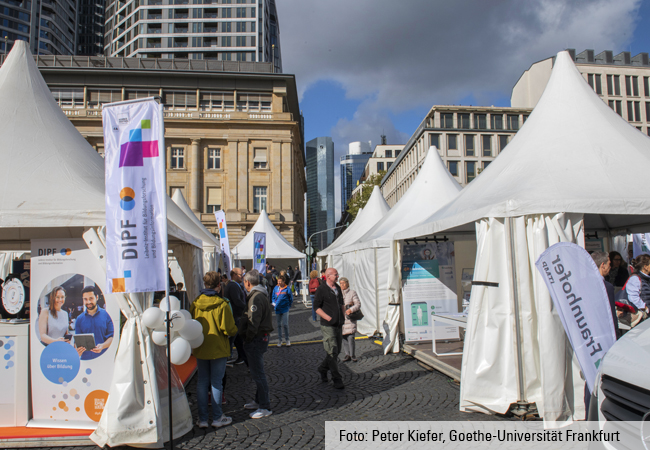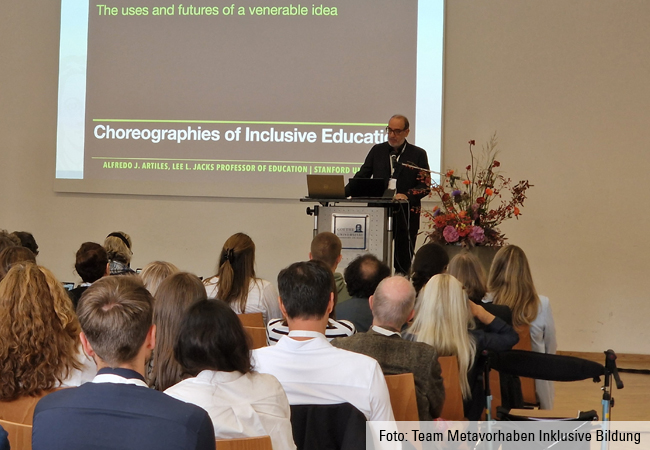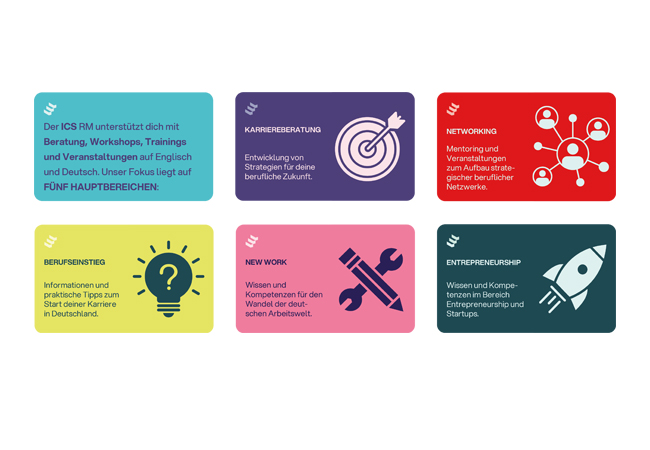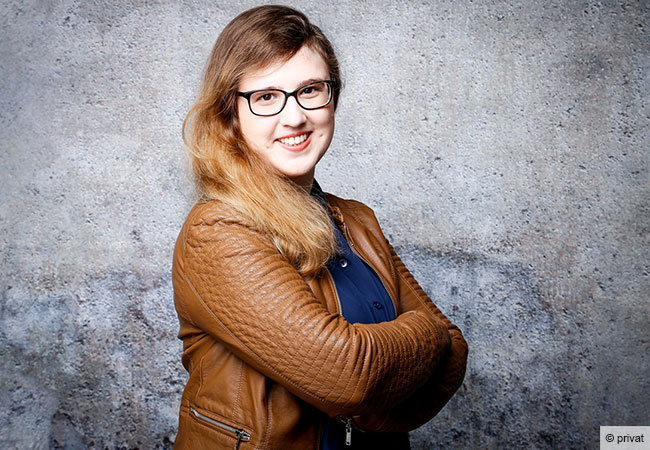
Following some cool, damp days, September 28 did not look very promising in the early-morning – but then actually turned out sunny. This boded well for the first Science Festival run by the “Frankfurt Alliance” that was founded at the beginning of the year. The festival took place on the city’s Rossmarkt square in downtown Frankfurt, and until the early evening it offered many interested visitors of all ages a varied program on the stage, plus numerous fascinating activities to join in and things to discover in the tents of the participating institutions.

“We are a new science network and our festival is consciously aimed at arousing the interest of the general public in science and answering some “how, what and why” questions in research. Our goal is to encourage dialog between research and society, and to tell people about scientific findings – and all of that should also be fun for the whole family,” stressed Prof. Enrico Schleiff, President of Goethe University, as the festival kicked off. The other speakers – Dr. Bastian Bergerhoff, Frankfurt City Treasurer and department head for finance, investments, and personnel; Associate Professor Zoe Waibler, Vice President of the Paul-Ehrlich-Institut (PEI)/Goethe University; Prof. Florian Heider from the Leibniz Institute for Financial Research SAFE/Goethe University; and Dr. Katharina Stummeyer (GSI/FAIR) – emphasized that the festival was a unique opportunity to take research to the public and to promote lively interaction between science and society.

The wide-ranging festival program was directed equally at all age groups. There was plenty for (potential) young scientists, who could don a lab coat and, using a microscope and a pipette, find out what it feels like to do research. In the centrifuge experiment in the tent of the Fraunhofer Institute for Translational Medicine and Pharmacology (ITMP), for instance, the young scientists put different fruit juices in the centrifuge to see how the components separated. The Max Planck Institute for Biophysics had an exhibit enabling visitors to take a virtual deep-dive into a cell. And the walk-in model of a heart provided by the Cardiopulmonary Institute (CPI) cluster of excellence was popular with visitors of all ages who wanted to learn more about diseases of the heart and lungs.

Digitization and Artificial Intelligence were also important topics at the festival. On the stage Daniel Schiffer (DIPF), David Weiss (Goethe University) and Martin Steinebach (ATHENE | Fraunhofer SIT) discussed the usefulness of AI in schools, the team from studiumdigitale (Goethe University) invited visitors onto the stage to take part in a large AI quiz, and in the DIPF tent they could try out some Virtual Reality technology.

The festival also offered plenty of entertainment. The two “mad” scientists Dr. KNOW and Dr. HOW took to the stage with a mixture of comedy and infotainment that evidently delighted the audience. Sascha Vogel, a theoretical physicist and the scientific communication curator of the stage program, presented a spectacular lecture on “Physics in Hollywood,” using some film clips to demonstrate that calculating physical phenomena such as Spiderman’s flight on spider silk can be both entertaining and instructive.

Moving from theory to practice, Nikita Kudakov, a researcher in the music department at the Max Planck Institute for Empirical Aesthetics (MPIEA), delivered a talk on typical body movements and verbal phrases in rapping… And only a few minutes later he returned to the stage as Coodiny with his band to close the festival with their pounding rap show that was a great hit, especially with the younger members of the audience.
More information about the Science Festival.
Julia Krohmer, who has a doctorate in geoecology and is Knowledge Transfer Coordinator of the Senckenberg Society for Nature Research, presented the “citizen science” plant search project on the festival stage.

UniReport: Dr. Krohmer, what do you think makes this kind of science festival so important, and what effect do you think it has had?
Julia Krohmer: I personally have long thought that in Frankfurt we needed the right events and formats to make our research visible in the city, and the fact that this has now happened in the form of this joint festival is just great. Frankfurt is a city of science, but nobody is aware of this. Making this visible and tangible, also to people who didn’t plan to come but just happened to be passing, was great. We had lots of visitors and they were very interested, the whole day long. We were really amazed.
It would be nice if that could be repeated either this way or in a similar form. Maybe we can soon start working together to apply for the European Night of Science!
People are definitely interested in nature and plants. So where does the “plant blindness” you mention come from? Should we maybe re-think the concept of “weeds”?
Of course!! This is a terrible word, no plants are weeds – it’s only our perception of them that makes them weeds. We can only guess at the causes: plants appear not to move, and you can’t stroke or feed them. Evolution probably also plays a role. Our vision is optimized to recognize color differences and movements so that we can identify hazards and sources of food. Plants – apart from their fruit – don’t come into those categories and so their presence is neglected by our sense of sight.
What is more, in societies that still live in and with nature, knowledge of plants is extremely important and also very widespread. As human life becomes more urban, plants become less important in our day-to-day lives, and then we don’t differentiate any more.
Visitors were encouraged to go looking for plants themselves on the Science Festival site. How did you organize that, and how many plants were found?
The visitors combed the area between the stage, the underground car park and the fountain, and noted down the various species, checking some of them with the Flora Incognita app, but we didn’t chalk their names on the ground because time was short. A total of 35 species were found, most of them widespread species that are typical of this urban habitat. They have curious names, like hairy bittercress, birdeye pearlwort, crab finger grass and little lovegrass, and equally curious and fascinating characteristics.
Doing research usually requires a university degree and scientific training. What can be provided by “citizen science” like your plant search, and does it also benefit science?
Our plant search is a very accessible citizen science format that anyone can participate in anywhere and at any time. The data collected throughout Germany via the Flora Incognita app are certainly valuable to research. They contribute to the documentation of phenological changes (when do which plants germinate/flower/bear fruit, and how this is changing) and to the recording of occurrences and the extent of their habitat, particularly in view of changing climatic conditions, from which many non-native plant species are now benefiting.
But for me, the plant search is first and foremost an easily accessible, inviting and creative environmental educational tool that encourages people’s interest in plants and arouses their curiosity.
Questions: Dirk Frank













